Black Muscat: A Grape by Any Other Name
The oldest genetically traceable family of grapes is the Muscat family. Over the centuries, the grape has traveled around the world and transformed itself through many genetic mutations. One of the most well known genetic crosses of the original Muscat grape is the Black Muscat. Black Muscat is a cross of the Schiava Grossa and the Muscat of Alexandria. The grape has very large, plump berries, with white flesh and black skin. The grape has intense, sweet floral and candy-like flavors.
Black Muscat can be used for a very wide variety of wine making purposes. It can be pressed to produce a white juice, that has been used in famous dessert wine productions as well as left on the skins to produce a flavorful rose or red table wine. It is popularly used for table wine production in California, China, and Eastern Europe. Quady Winery in California has gained fame and many acclimations over their dessert wine, Elysium, produced from the Black Muscat grape. The intense florals and sweet fruit flavors that are found in the unprocessed grape, translate in the finished wine product. Big flavors of raspberry jam and candied citrus make the wine deliciously sweet with enough acidity to create a harmonious balance. Because the wine can be made in so many different styles, the winemaker has many choices to control the outcome of the final product. If creating a dessert style wine, beneficial yeast strains would be Vin 13 or R2 to promote the complex floral aromatics. If creating a rose or table wine, QA23 or 71B yeast strains will help to promote aromatics and to capture the ripe red fruit flavors. Skin contact time will be critical; a few hours on the skins will produce a flavorful rose and then full maceration/fermentation on the skins will create a fruit forward table wine.
Musto Wine Grape has had such wonderful results with this grape, that Frank Musto has planted his own fields of this varietal. The vines are coming up on their 20th birthday, generating large but complex fruit and excellent yields. Frank Musto’s Black Muscat has started being harvested and is arriving in Hartford currently. Brix levels are averaging in the mid 20’s with smooth acidity. We are looking forward to making a fruit forward rose this year with some of the fruit. It is exciting to create a new style of wine with such an ancient, treasured strain of grape.
by the Winemakers at Musto Wine Grape
Ger-whaaaat? You may not be able to say Gewurztraminer, but here is why you should be making it.
Gewurztraminer is an aromatic German varietal that has been twisting tongues of wine enthusiasts for decades. Only in the past decade has Gewurztraminer been making a more consistent appearance on wine lists and in wine stores. With interest in not just sweet, but complex, sweeter wines trending amongst millennial drinkers, varietals like Gewurztraminer are seeing a surge in their popularity.
Gewurztraminer is a grape variety that is originally from the Alsatian region of France, on the German border. Its attractive pink to light red color of its skins was thought to be a genetic mutation of the Red Traminer grape of Germany and Northern Italy. Its name comes from the German “Gewurz”, which means “herb” or “spice”. When sipping Gewurztraminer, it is easy to see the development of its name, as the grape is famous for its floral, slightly herbal, and spicy aromas. Upon vinification, the grape often has large aromas of lychee, rose petal, white pepper, and passion fruit. The varietal is most well-known for its intense aroma. Even small amounts, when added to a blend, will greatly enhance complexity of the aroma.
When making your own Gewurztraminer, Musto Wine Grape imports Gewurztraminer from the Central Valley of CA. This premium grape growing region generates a ripe, bold example of Gewurztraminer. The grapes average around 24-26Brix upon arrival, with appropriate, refreshing acidity. We would suggest using Vin 13 or R2 yeast to enhance the varietal character and to help promote the fruity and floral aromas that the Gewurztraminer is known for. The addition of supplemental yeast nutrients such as Booster Blanc and Opti-White will help to preserve the intense aroma for long term enjoyment and a small addition of FT Blanc Soft can help to increase the mid-palate volume and intensity of flavor. We always advise to use a complete nutrition program throughout fermentation, including the use of Go-Ferm, Fermaid O, and Fermaid K. This will help avoid any stuck fermentations and off aromas. Gewurztraminer will not benefit from malolactic fermentation.
The intense perfume-like aromas and luscious tropical flavors found in Gewurztraminer make it an excellent pairing for spicy food such as Asian cuisine or Indian Curry. It is a refreshing patio sipper with such an astounding aroma, it is guaranteed to impress anyone who you may pour it for.
by the Winemakers at Musto Wine Grape
Veraison in the vineyard and how it affects winemaking
Currently our grapes are going through veraison in California. Veraison occurs when the berry transitions into the ripening stage. From now forward the berry will increase in sugar concentration until it is harvested at the desired brix level. Grapes for sparkling wine or champagne are harvested around 17 brix and grapes for still wine are harvested around 25 brix. The brix level will determine the alcohol level in the wine. For example, a grape picked around 25 brix should create a 12.5% alch by volume wine.
Harvest will be here before we know it! It’s to time start getting organized. Click HERE to see our upcoming events and classes that will help you get ready for harvest.
Grapes going through verasion at our vineyards in California
Details from our Trip to Chile
As the grapes begin to harvest we reflect back on the amazing trip that we had in Chile. Check out our Chilean itinerary below. Anyone up for a trip to Chile? Because we can’t wait to go back and visit!
Day 1: Colchagua
As we drove through the Colchagua Valley I couldn’t help but feel like I was back in Napa driving down the Silverado Trail or HWY 29. Lush vineyards surrounded us on either side of the highway. Each winery we passed was just as majestic as or more than the next. A blissful start to our trip.
We stopped at few wineries that day before we visited our vineyards for research purposes ;). The first winery we stopped at was Lapostelle’s Clos Apalta winery. This winery calls itself “French in essence, Chilean by birth”. A striking winery that is 100% gravity fed. They have over six levels in the winery. Each with a specific fermentation or aging purpose. The tasting room is on the second to last floor and is so cold they offer blankets for patrons when tasting wine in their cave like room. Directly below the tasting room is the proprietor’s personal cellar, with over 1000 bottles of wine. Quite the collection. This was one of the more interesting tasting experiences we’ve had.
For the rest of the day we visited our Colchagua Vineyards and they were incredible! The Colchagua Valley is known for growing bold red wines, such as Carménère, Cabernet Sauvignon, Cabernet Franc, and Syrah. It has a mediterranean climate and is located along the southern end of the Rapel Valley. This topography creates a climate that receives around 23.3 inches of rainfall per year and little to no rainfall during their summer months. This helps keep the grapes safe close to harvest and ensures that the grapes are fighting for water therefore creating a more intense fruit. The soil is made up of sand, decomposed granite, and clay. Another great indicator of quality viticulture. These soil components soak up acidity and help create a more balanced wine grape to work with.
Days 2-3: Curico Valley
The hospitality in Chile was something we have never experienced before. The people were so kind and accommodating. First, we rode on horseback around the Chardonnay vineyard. Not being very good at horseback riding this was a little nerve wrecking, but we were able to make it around the vineyard (barely). Besides the stress of being on a horse the views were gorgeous and it was quite the way to take in the vineyard views.
Curico is place where many wineries and growers work with large producers. They have high-end equipment with state of the art technology; but at the same time there are family wineries and growers who create incredible boutique wines using a combination of old world tradition and a few new world winemaking practices. You can see the combination of new and old just by driving down the street. You not only pass fancy cars, but every once in a while you’ll pass a horse and buggy. Yes that is correct. Many people ride horseback throughout the area rather than drive cars. Curico has been a wine grape growing region since the 1800s and you can see the incredible history of the wine region as you drive down the street.
The wines from our grower’s personal winery were delicious! Sebastian and Manuela make a great father/daughter team when it comes to winemaking. Their wine label is called “Correa Albano” and the Sauvignon Blanc was so fruit forward and bright. I couldn’t get enough of it. Especially on such a hot summer day, it was the perfectly refreshing and complex Sauvignon Blanc. The Carmenere was unlike anything I’ve ever tasted. It had a “dusty” almost “napa-like” nose to it. It was full of delicious dark fruits with soft and rich tannins. This wine has inspired me to try to make Carmenere again. I am hoping the new CSM yeast will get me close to this flavor profile. One of things Manuela touched on was the importance of temperature during fermentation for both white and red wines. She said she is meticulous about monitoring temperature during her primary fermentations and it is one of the keys to her winemaking success.
After tasting some our grower’s wines we sat down for a true Chilean lunch and the food was delicious! Our growers were incredibly kind and prepared a few authentic Chilean dishes for us to enjoy (keep an eye out for some recipes to hit the blog soon). It was a feast of delicious Chilean produce, spices, and flavors, which was followed by a barrel tasting where Sebastian and Manuela let us try some of their aged red wines. They used multiple yeasts and are starting to think about blending the different oaks.
As our 5 hour lunch and tasting came to an end we went to see more of the vineyards, and let me tell you, this car ride was epic. It was to a point where we didn’t think our rental car would make it over the rocks and through the brush. I felt like I was on a jungle safari in a car that was about to crumble underneath us with each bump we hit. We went from a beautiful roadside vineyard of Malbec and Merlot, up a large hill rocky hill to Cabernet Sauvignon, through a jungle forest that opened up to a gorgeous Syrah and Cabernet Sauvignon vineyards. It felt like we discovered a vineyard oasis. It was Sebastian’s father’s favorite vineyard. You could tell it held a special place in his heart.
Day 4: Viña Alpatagua
The next winery we visited was Viña Alpatagua. The winemaker gave us an insider’s tour of the tank area, barrel room, and bottling line. It is a winery that is full of creativity and passion. The level of precision that is taken with each wine was very apparent, as was how creative the winemaker was. The winemaker, Pablo Barros, infused their sparkling wine with pomegranate juice from their estate pomegranate trees. It was a delicious addition to an already delicious sparkling wine.
Most of their wines were appellation focused. We tried wines specifically from Curico and Colchagua. Most of the vines that they worked were very old, some up to 70 years old! My favorite wines were the Pomegranate infused sparkling, the Carmenere, their Cabernet Sauvignon, and Riesling. This winery creates wines of great distinction. A must see if you are in Chile.
Day 5: Santiago
On the last day of our trip we enjoyed some delicious Pisco with some of our hosts, Alfredo and Suzanne. Alfredo and Suzanne are kind enough to take video, photos, and give us up to date harvest information. We are very lucky that they are so willing to give us information so quickly and efficiently. Alfredo and his family are a big part of why we are able to bring in such high end grapes from Chile.
Since it was our first time trying Pisco, they took us to a Pisco bar in downtown Santiago. This bar had some delicious ways to try it. They had over 30 different cocktails centered on the authentic, grape-based liquor. What a way to leave Chile! The next morning we reluctantly headed back to the US. An incredible trip with so many great memories, new knowledge, and media to share with our winemakers back home.
As the plane took off and I settled in for the long flight home I couldn’t help but reflect back on the incredible people we met. They are kind and caring families who truly love what they do. You can see the passion they have for the wine industry, their families, and the people they work with. They said, “Wine is made in the details… If people work in a good way it takes a direct effect on the wines.” I couldn’t agree more. It was an incredible trip and we feel so very fortunate that we are able to work with such amazing growers and their families.
Back Sweetening like a Pro
Oftentimes winemakers desire a slightly sweeter product than their fermentations offer. Rather than trying to halt fermentation early, leaving an unknown amount of sugar in the wine, it is a much more predictable and common practice to back sweeten the wines, adding sugar to the dry wine prior to bottling.
Check out our LIVE feed of the class on Facebook for more info!
Back Sweetening White vs. Red Wines
One of the benefits of making your own wine, is being able to create a wine tailored to your specific tastes. Traditional “rules” of dry reds can be forgotten as you create a wine designed for your palate. There are different steps to sweetening red and white wines to ensure success.
Red Wine
- Lysovin:
- An anti-microbial to kill off any remaining MLF bacteria. Only targets gram-positive bacteria such as Lacto-bacillus (not Acetobacter).
- Prevents unfavorable interaction of sorbate and MLF bacteria (can cause geranium taint). Must be applied one week before sorbate and sweetening.
- Use 1.5g/gal hydrated in 10 times its weight in water. Allow to sit for 45 mins.
- Do not stir too aggressively to avoid foaming. Stir into wine gently but thoroughly.
- To calculate 10 times a product’s weight in water:
- Take amount in grams (Y) and multiply times ten (Y x 10=Z)
- Then take Z (in grams) and use an online calculator to convert into pounds.
- Then take Z in lbs and divide by the weight of one gallon of water (Z/8.2 =A) A will be the amount of water needed to hydrate the product.
- Sorbate:
- Potassium Sorbate will help prevent yeast from reproducing and refermenting the newly introduced back sweetening sugar.
- Make sure wine has been thoroughly racked and clarified before applying sorbate.
- Use 1gram/gallon and dissolve in warm water.
- Sulfite:
- It is important to ensure that your sulfite level is up to the suggested ppm for that varietal, contingent on that wine’s pH value.
- Use the sulfite calculator on Winemaker Magazine’s website to determine the correct sulfite concentration contingent upon your wine’s pH.
- Fructose:
- Fructose is the primary sugar found in fruits such as grapes, that is the best for back sweetening to provide a natural sweetness to the finished wine.
- Bench trials should be conducted to discern the level of sweetness preferred by the winemaker.
- Please see the attached sheet for back sweetening bench trial protocols. Once a level has been determined, use the following equation to determine the amount of fructose to be added.
- Amount of gallons x 8.2lbs/gallon = X (weight of wine)
- Use X multiplied by the percentage of residual sugar desired will yield the amount of fructose needed.
- Ex: 100 gallons x 8.2lbs/gal = 820lbs x 2% RS (.02)=16.4lbs of fructose needed.
- Dissolve the sugar in as little hot water as possible. Mix into the wine via vigorous stirring or during a pump over.
White Wine
- Sorbate:
- Potassium Sorbate will help prevent yeast from reproducing and refermenting the newly introduced back sweetening sugar.
- Make sure wine has been thoroughly racked and clarified before applying sorbate.
- Use 1gram/gallon and dissolve in warm water.
- Sulfite:
- It is important to ensure that your sulfite level is up to the suggested ppm for that varietal, contingent on that wine’s pH value.
- Use the sulfite calculator on Winemaker Magazine’s website to determine the correct sulfite concentration contingent upon your wine’s pH.
- Fructose:
- Fructose is the primary sugar found in fruits such as grapes that is the best for back sweetening to provide a natural sweetness to the finished wine.
- Bench trials should be conducted to discern the level of sweetness preferred by the winemaker.
- Please see the attached sheet for back sweetening bench trial protocols. Once a level has been determined, use the following equation to determine the amount of fructose to be added.
- Amount of gallons x 8.2lbs/gallon = X (weight of wine), Use X multiplied by the percentage of residual sugar desired will yield the amount of fructose needed.
- Ex: 100 gallons x 8.2lbs/gal = 820lbs x 2% RS (.02)=16.4lbs of fructose needed.
- Dissolve the sugar in as little hot water as possible. Mix into the wine via vigorous stirring or during a pump over.
Bench Trials for Back Sweetening
- Preparation of solution for bench trials:
- Dissolve 40gm of Fructose into distilled water so final volume is 200ml
- 100ml of solution contains 20gm Fructose which will raise RS of a gallon of wine by 1%
Bench testing:
- 50ml sample:
- 13ml = 0.1%
- 65 ml = 0.5%
- 3ml = 1.0%
- 100ml sample:
- 26ml = 0.1%
- 3 ml = 0.5%
- 6ml = 1.0%
- 375ml sample:
- 0ml = 0.1%
- 0 ml = 0.5%
- 0ml = 1.0%
- 750ml sample:
- 0ml = 0.1%
- 0 ml = 0.5%
- 0ml = 1.0%
The Winemaker’s Think Tank: Vol 37 – “How do I make Rose?”
What’s the Winemaker’s Think Tank?
Every Thursday we will post about a few frequently asked questions that our winemaker has answered. If you have a winemaking question you would like to have answered, please email us at support@juicegrape.com and we will try to get into next week’s post. Cheers! 🙂
How do I make Rose?
There are a few different approaches to making rose wines. The most traditional way is to crush red grapes, leave the juice in contact with the skins for a limited amount of time, then press off the juice rather quickly (within a few hours) to yield a deep pink colored juice. Once this juice is fermented, it will yield a rose wine. The best grapes to use for this type of production would be any red varietal with a higher acidity. Early picked red grapes or a very fruit forward varietal tend to make the best roses. Some varietals that we have worked with successfully to make beautiful roses are Barbera, Grenache, Gamay, Chambourcin, and Pinot Noir.
Another approach would be to take a white wine and to add a small portion of red wine to it, predominantly for body and color. A very small amount of red wine will provide adequate color to change a white wine into a rose color. A small amount of prep work needs to be done before the blend is created. If the red wine was put through malolactic fermentation, the MLF must be complete before the wine is added into the white wine. If the red wine has not completed MLF, it cannot be used to blend as the bacteria will begin to metabolize the malic acid within the white wine. To prevent this, first make sure that the wine has completed MLF, then add Lysozyme to prevent the further proliferation of bacteria. It is always imperative to make sure that the wines have also been adequately sulfited prior to blending as well. It is very important to do bench trials of the blends before the addition of the red wine to ensure the desired results. A small amount (5-10%) of the red wine will add a nice touch of color and body to a white wine, creating a beautifully blended rose.
We hope this information helps with your winemaking. If you have any follow up questions or winemaking questions in general, please email us at support@juicegrape.com.
The Winemaker’s Think Tank: Vol 35 – How do I know if fermentation is complete?
What’s the Winemaker’s Think Tank?
Every Thursday we will post about a few frequently asked questions that our winemaker has answered. If you have a winemaking question you would like to have answered, please email us at support@juicegrape.com and we will try to get into next week’s post. Cheers! 🙂
How do I know if fermentation is complete?
It is often easy to see visual signs of fermentation: from activity in the airlock, bubbles, and the formation of a cap to the aromas of yeast and carbon dioxide, the wonders of fermentation are succinct observation. But how does the home winemaker know when the fermentation is complete? The simplest way of seeing if fermentation is complete is to taste the wine and observe if there is any sweetness to it. If there is still sugar that you can taste, the yeast have not yet completed their job. The most accurate and scientific way of seeing if fermentation is complete is to take a measurement of the Brix via a hydrometer. A hydrometer is a glass instrument that reads sugar content via the hydrometers buoyancy in wine juice. The juice sample should always be placed into a sanitary, cylindrical shaped vessel. As the wine ferments, yeast consumer sugar and excrete alcohol, making a thinner, less dense liquid. At the beginning of fermentation, the hydrometer will not sink very far into the wine. The sugars within the juice make it thicker and the hydrometer will float on top of the juice. As fermentation progresses the new wine becomes less dense and sugary, allowing the hydrometer to sink down into the liquid. When the fermentation is complete, the hydrometer will sink down into the liquid to the 0 mark, if not farther. When reading the hydrometer, spin it slightly in the cylinder to dislodge any bubbles that may cling to the sides of the hydrometer. Observe where the meniscus of the wine falls on the gradients of the hydrometer. This will give you your sugar level in degrees Brix of the fermenting wine. When the hydrometer sinks to zero or below, the fermentation is complete and you can rack the wine.
We hope this information helps with your winemaking. If you have any follow up questions or winemaking questions in general, please email us at support@juicegrape.com.
Wine Class Schedule
We have a bunch of classes coming up! Make sure to RSVP via Facebook or Sign Up via the website!
Saturday September 23rd: Common Winemaking Mistakes (FREE) at 10:00AM – RSVP by clicking HERE
Saturday September 30th: Winemaking 201 – Winemaker Lab Skills ($75.00) at 10:00AM – sign up by clicking HERE
Saturday October 7th: Winemaker Bootcamp ($150.00) at 9:00AM – sign up by clicking HERE






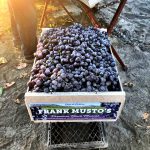
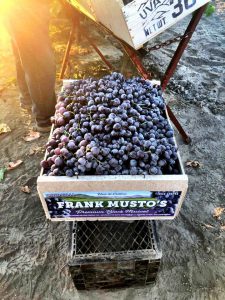
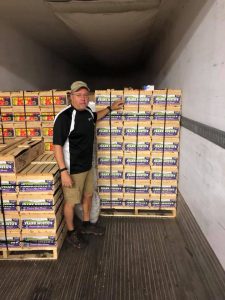

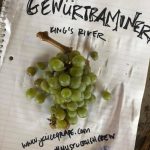


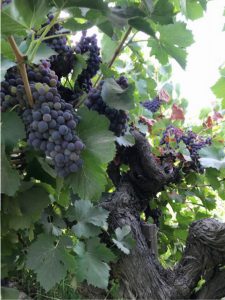
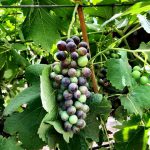


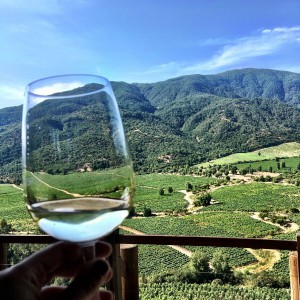


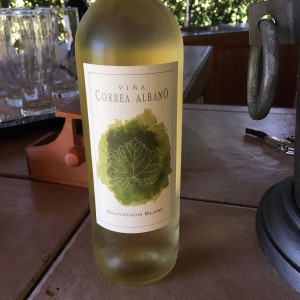
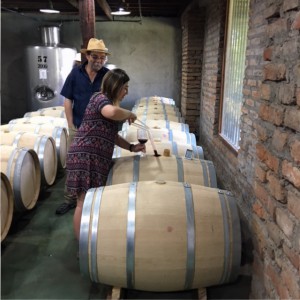
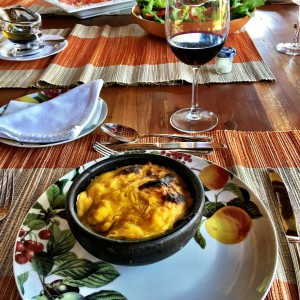

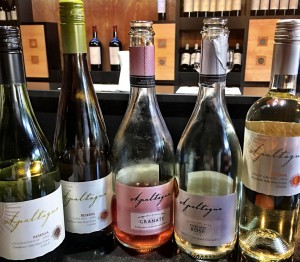
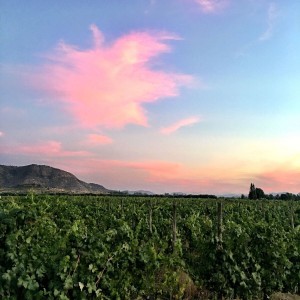



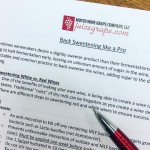
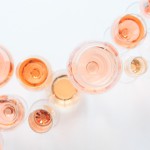
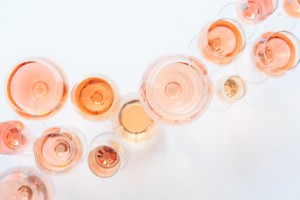
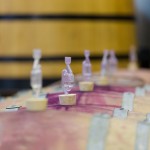

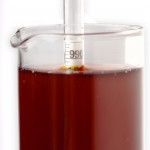
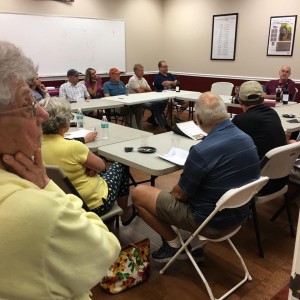
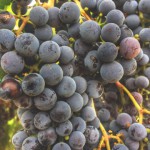
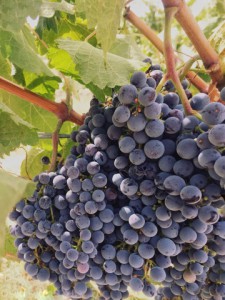
Recent Comments